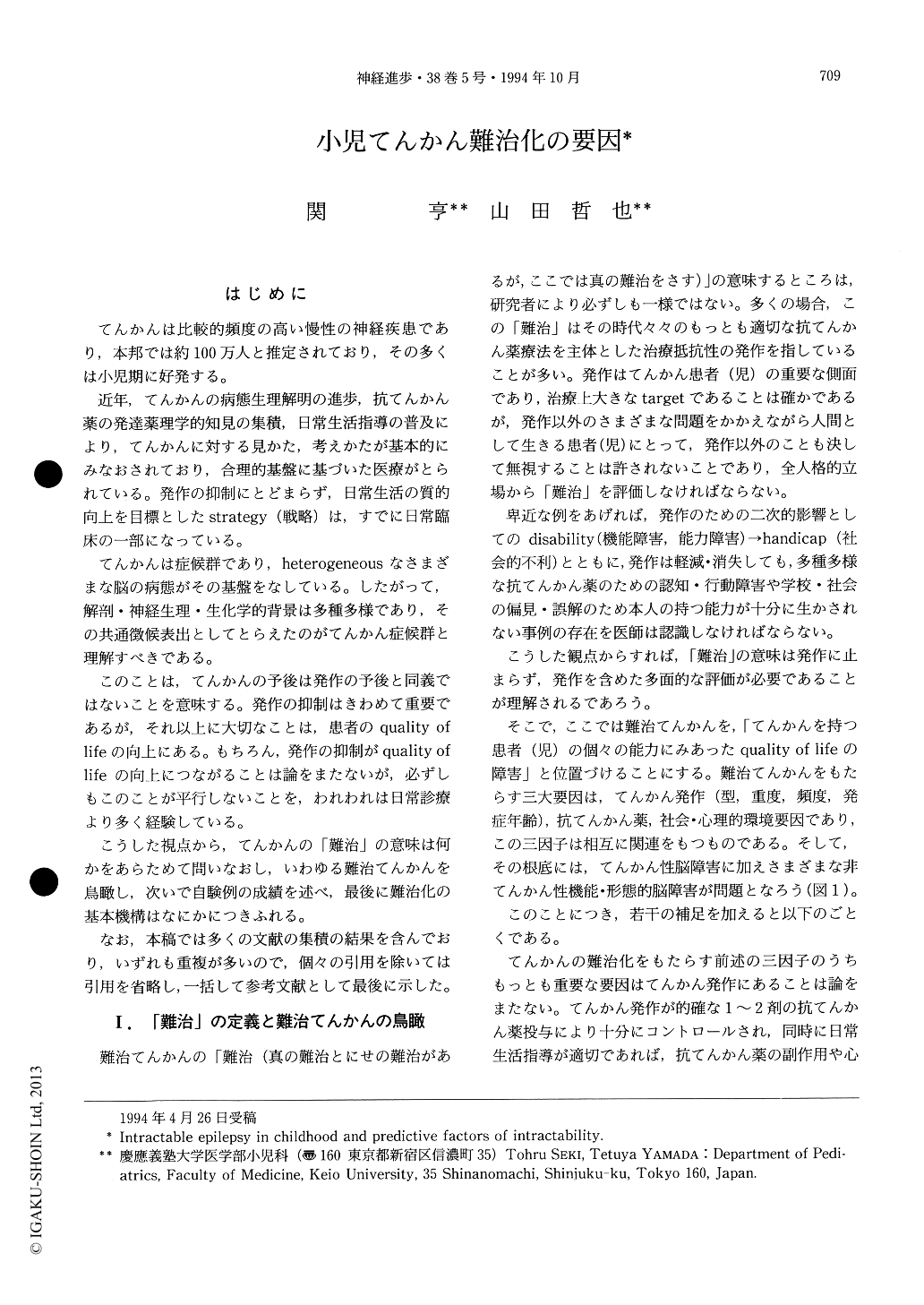Japanese
English
特集 てんかんの包括治療
小児てんかん難治化の要因
Intractable epilepsy in childhood and predictive factors of intractability
関 亨
1
,
山田 哲也
1
Tohru SEKI
1
,
Tetuya YAMADA
1
1慶應義塾大学医学部小児科
1Department of Pediatrics, Faculty of Medicine, Keio University
pp.709-717
発行日 1994年10月10日
Published Date 1994/10/10
DOI https://doi.org/10.11477/mf.1431900570
- 有料閲覧
- Abstract 文献概要
- 1ページ目 Look Inside
はじめに
てんかんは比較的頻度の高い慢性の神経疾患であり,本邦では約100万人と推定されており,その多くは小児期に好発する。
近年,てんかんの病態生理解明の進歩,抗てんかん薬の発達薬理学的知見の集積,日常生活指導の普及により,てんかんに対する見かた,考えかたが基本的にみなおされており,合理的基盤に基づいた医療がとられている。発作の抑制にとどまらず,日常生活の質的向上を目標としたstrategy(戦略)は,すでに日常臨床の一部になっている。
A definition of intractable epilepsy remains elusive. In this presentation, it is proposed that patients be defined as having intractable epilepsy if their “quality of life” are of low levels disproportionately to their abilities despite reasonable medical and social managements regardless of controlled or un-controlled epileptic seizures.
It is important to be able to predict the probability of intractability or remission in patients who are beginning to have epileptic seizures.

Copyright © 1994, Igaku-Shoin Ltd. All rights reserved.


